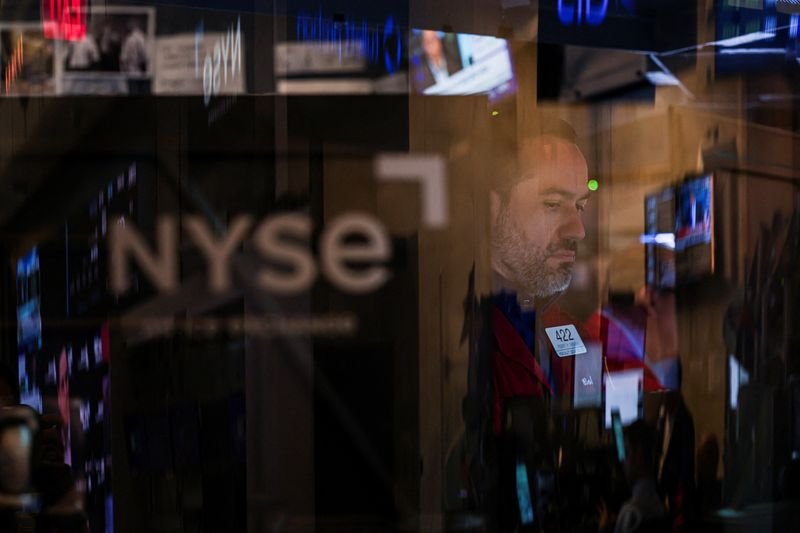By Lewis Krauskopf and Saqib Iqbal Ahmed
NEW YORK (Reuters) -Investors have shifted from panicking about tariffs to relief buying, lifting the U.S. stock market back to record highs as corporate earnings and the U.S. economy held up better than many had expected through a period of dramatic policy change.
The S&P 500, seen as the benchmark for the U.S. stock market, closed at 6,173.07 on Friday, up 0.5% on the day — its first close above 6,144.15, its previous all-time closing high from February 19.
In the intervening period, the S&P 500 fell as much as 18.9% on a closing basis from the February level to April 8, nearly enough to label the decline a bear market. Stocks plunged after President Donald Trump’s “Liberation Day” tariff announcement on April 2 sparked broad concerns about an impending recession.
Worries eased as Trump moderated his harshest tariffs, and the market rebounded.
The Nasdaq Composite also closed at a record high on Friday, its first all-time peak since December 16, confirming the tech-heavy index is in a bull market.
Stocks got their latest boost this week from easing fears about conflict in the Middle East after Trump’s announcement of a ceasefire between Israel and Iran and optimism about the Federal Reserve lowering borrowing costs in coming months.
The past four months in the market reflected deep concerns about Trump’s trade and tax policy, said Rick Meckler, partner at Cherry Lane Investments in New Jersey.
“In the investment public’s mind, it went from a sense of tremendous pessimism to what seems to be optimism that this will all fall into place,” Meckler said. Policy risk, however, is “still there.”
As worries eased, volatility measures have fallen dramatically. The Cboe Volatility Index, an options-based measure of investor anxiety, spiked in early April, hitting 60 and closing as high as 52.33 on April 8, its highest closing level in five years.
The VIX index has since receded and was last at 16.32, near its long-term median of 17.7.
The market appears to be pricing downside risk at levels similar to those seen before early April, when Trump unveiled his tariffs, said Garrett DeSimone, head quantitative analyst at OptionMetrics. But unlike the post-election rally late last year, sentiment does not appear excessively bullish or complacent, he said.
Investors said a stronger-than-expected first-quarter earnings season for U.S. companies helped drive the rebound in stocks. S&P 500 company profits overall rose 13.7% from a year earlier, compared to an 8% gain expected as of April 1, according to LSEG IBES.

